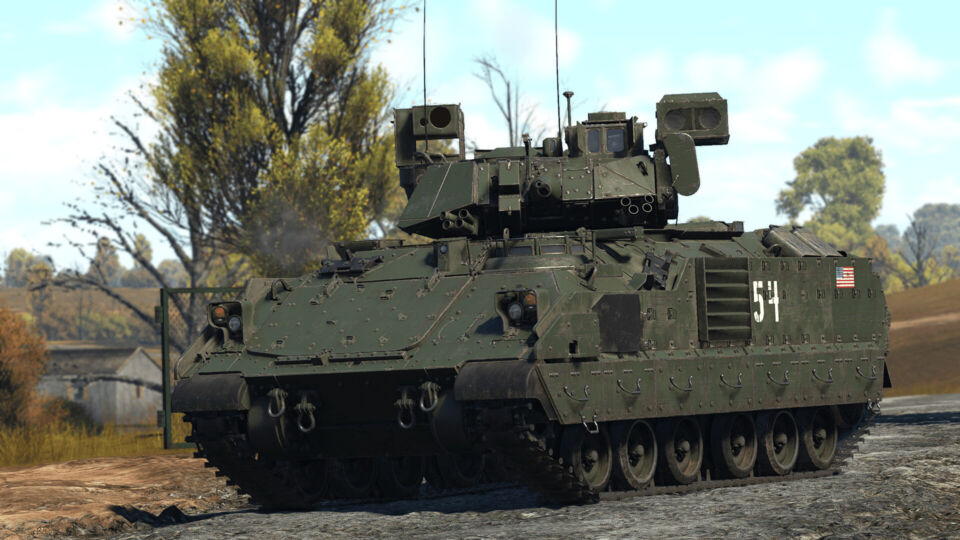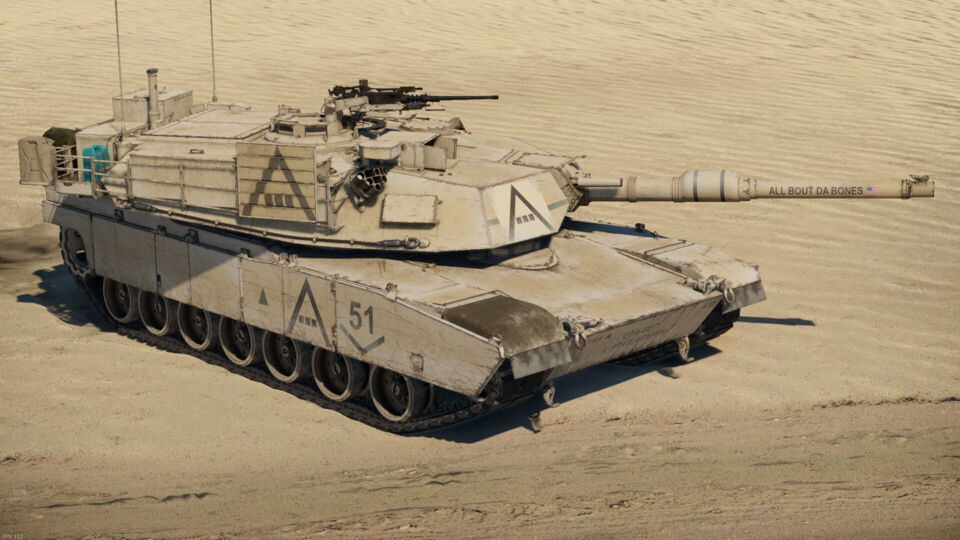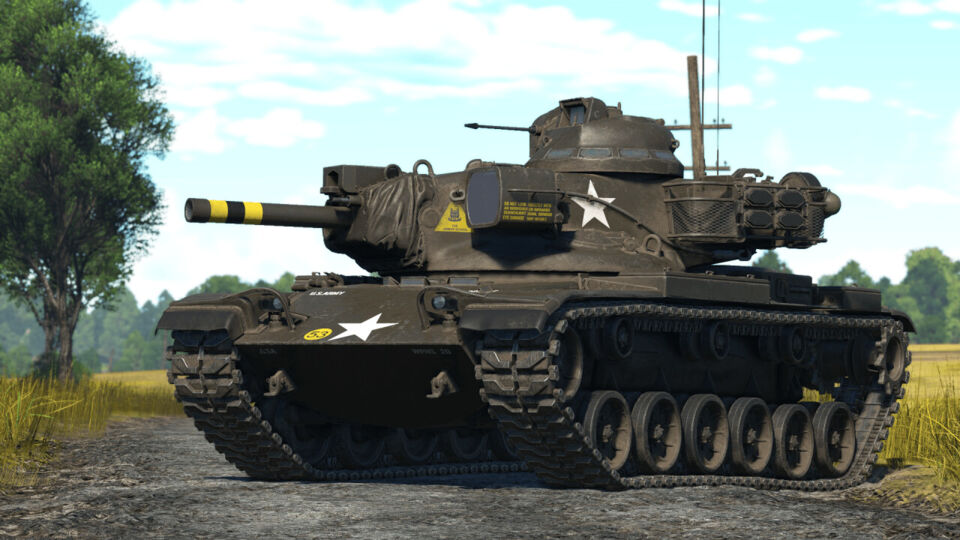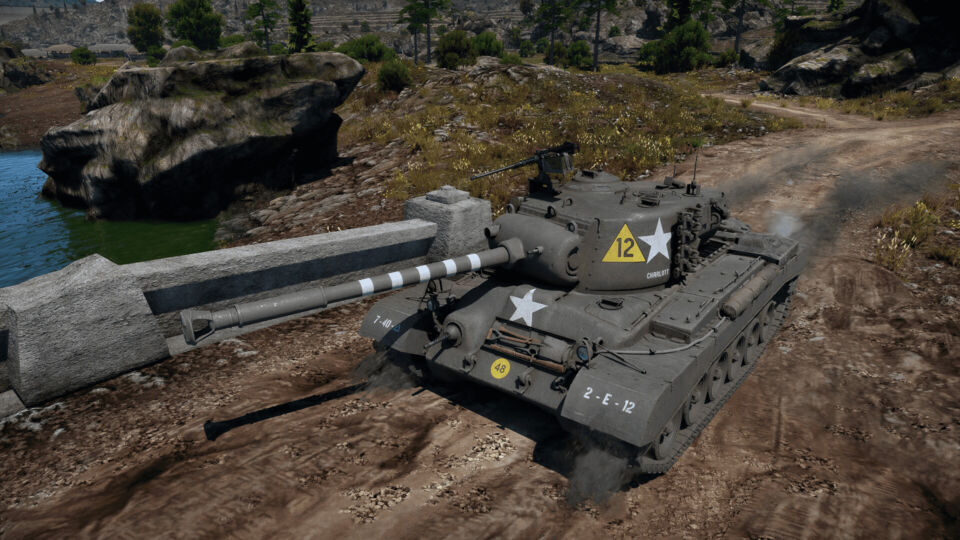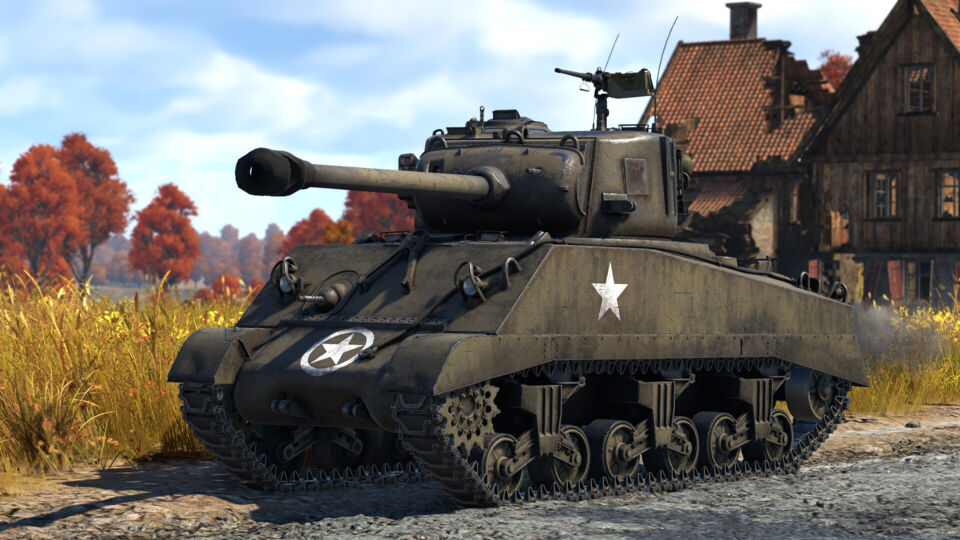The M3A3, the upgraded descendant of the M3 Bradley, is a substantial and favored upgrade over the lightly armored CFV players are familiar with, boasting improved FCS, weaponry, and protection. But the M3A3, unlike its predecessor, is plagued by a slight but sluggish reduction in speed thanks to the armor plating on the hull and turret, and still possesses the familiar size of a city block that the M3 Bradley had. But if one ignores those downsides, they will find that this weaponized brick of war can hit just as hard as a brick thrown at Mach 1.
The M1A1 AIM is an export version of the M1A1 AIM for the Royal Australian Armored Corps (RAAC), receiving an upgraded armor array and improvements in the FCS that the previous M1A1 in the US tech tree doesn’t have; said improvements include the addition of enhanced protection in both the turret and LFP that the M1A1 lacked in, and Gen 2 thermals for the gunner and the commander’s .50 cal machine gun. The KE-W round it possesses is also a potent round, being able to penetrate the enemies that the AIM faces at its BR. While this MBT lacks further upgrades to protection that the M1A2s possess, it’s a generally reliable brawler-sniper that can hold its own on the battlefield.
As the M60 was coming into service, development started to create an ATGM armament for the tank to put it into service by 1965, which would lead to the 152mm gun/launcher system being mounted on a uniquely designed turret (Type B) on top of the M60 hull; however, the US Army's dream of a simple transition into the weapon system was trashed when complications with the system arose, especially in regards to the sensitive ammunition. While a limited production run was allowed with the tank designated as the M60A2, continued trouble with the tank led to the M60A2's phasing out, with only 526 units produced.
The M46 Patton is a new, fresh change from the M26 Pershing. The two biggest shortcomings of the M26, mobility and firepower, have been improved to allow a better player experience with the tank. On top of the upgrades it achieved, the M46 has also acquired add-on turret protection against chemical rounds (though still vulnerable to high-mass explosive rounds) and even possesses an ace up its sleeve, HEAT-FS, for all ground vehicles. Even though its armor remains relatively weak against enemy kinetic and chemical rounds, it can be a versatile vehicle on the field when played to its advantages and upgrades.
The XM246, regarded as “The American Gepard” thanks to its twin 35mm Oerlikon KDA autocannons, boasts a rather unconventional turret design on top of the M48 Patton III hull, similar to other U.S. vehicles like the M4/T26, M60A2, and the 120S. For players looking for a switch from the M163 and the rather unreliable tracking radar, the XM246 presents a fresh introduction to anti-air radar combat, introducing the search radar along with the tracking radar. While the XM246 lacks armor for the turret and has important components that can be disabled by enemy fire, it shouldn’t be underestimated easily, thanks to its lethal fire rate against both air and ground targets.
The M109A1 was introduced into American service in 1973 as an improved version of the M109 self-propelled howitzer. The main improvement was the installation of a new 155 mm M185 cannon, which had a longer barrel and a higher muzzle velocity than the previous M126, increasing the effective range of the M109A1 from 14.6 km to 18 km, giving it an advantage over foreign artillery. Where this tank lacks in armor and survivability, it makes up for with a powerful armament and choice of chemical rounds that can overpressure any tank, and even knock out aircraft from the skies.
During the late WW2 period, the U.S. Army realized that the newer German tanks (Panthers and Tigers) were not only getting more challenging and deadlier but were becoming more numerous on the battlefield. Hence, the U.S. looked for ways to increase the firepower; one method was to implement the M26 Pershing turret (T26 at the time) onto the Sherman hull, and while the single prototype test in 1944 proved it could be done, the U.S. canceled the project, knowing the conversion would be a waste of time over introducing the M26 Pershing immediately during the war.
In the early stages of the Vietnam War, the US short-range air defense primarily consisted of the M42 “Dusters”. However, the 40mm Bofors guns were becoming less adequate due to rapid advances in aviation technology. To improve on this, the 20 mm Vulcan cannon used on American jets was utilized as the basis of a new short-range air defense gun, modified into the M168 gun. Mounted on the M113 APC chassis, the M163 VADS (Vulcan Air Defense System) is equipped with a loadout that, while insufficient compared to other long-distance tracking SPAA like the Gepard or the ZSU-23-4, is sufficient enough as a short-range SPAA that can rip and tear through aircraft with its 20mm M168 Vulcan Gun.
The M901 ITV (Improved TOW vehicle) is an American armored vehicle introduced into service in 1979, and designed to carry a dual M220 TOW launcher. The US used the M901 in Operation Desert Storm, where it is credited with 14 kills. The M901 is not so different from the playstyle of those familiar with ATGM carriers. With its dual TOW launcher, and the iconic BGM-71 TOW missile in its arsenal, this lightly armored vehicle packs a heavy punch against tanks that pose a threat to it.
For players familiar with playing the M46 with its HEAT-FS and decent mobility, it is no different when playing in the M47 Patton II, as it still retains the APCBC with HE filler and HEAT-FS for long-range engagements, all with a similarly powerful gun to boot. However, this tank differs from the M46 in a couple of things, which we’ll dive into in this article.
